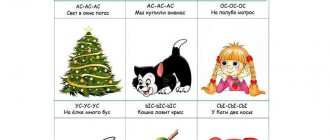Collocations (67)
- La Scala
- La Toya
- labeo two-color
- Labeotropheus Fuellerborn
- laboratory work
- wolf laurel
- bay berries
- laurel businessman
- laurel crown
- Laurel wreath
- Bay leaf
- laurels don't let you sleep
- laurels of the winner
- death camp
- Kalmyk incense
- incense pine
- incense cedar
- incense cypress
- good life
- well fitted
- Ladoga lake
- I'm okay to drive
- Singing Lazarus
- laser combat
- laser disc
- surfing the net
- rock climber
- Cote d'Azur
- airliner faster than the speed of sound
- patent leather shoes
- litmus test
- amethyst lacquer
- pink lacquer
- lacquer wood
- tasty dish
- tidbit
- tasty
- Lacrima Christi
- Lal Chandanum
- lanatoside c
- landscape design
- lily of the valley
- lily of the valley tree
- cat paws
- bast shoes slurping cabbage soup
- spitting bast shoes
- Potentilla erecta
- noodles on the ears
- removed his paws
- the box just opens
- caressing the eye
- caressed himself with hope
- caresses the gaze
- caresses the eye
- caresses the ear
- caressing the ear
- sweet Nothing
- sweet words
- affectionate at heart
- gusset grass
- fins glued
- latent period
- Latin America
- latin cuisine
- Latin alphabet
- Latok 1
- Nobel Prize Laureate
On this page you can find the most popular words starting with "la" (LA at the beginning of the word). The list is sorted alphabetically. You can add your options in the comments. If you click on a word, its synonyms and meanings will open.
See also: words containing LA.
Open page 2 of words in la →
- The search took 0.008 seconds. Remember how often you look for something to replace a word with? Bookmark sinonim.org to quickly search for synonyms, antonyms, associations and sentences (press Ctrl+D).
Russian syllables
10.01.2013
The syllable "La" basically has the meaning of covering. Look: patch, patch, varnish.
I will give an example of deciphering the meaning of the syllable “la”.
Many Russian words containing the syllable “la”:
Balagan, hoodie, shoe cover, benefit, mace, damask steel, moisture, eye, eye socket, vein, grain, gold, needle, treasure, valve, doll, fist, storehouse, lava, avalanche, bench, log, camp, incense, palm, laz, bark, varnish, lap, lamp, paw, bast shoe, bast shoes, chest, weasel, flipper, patch, patch, armor, lahudra, shack, haze, pancake, tent, saw, crybaby, flame, layer, plate, plaster, plateau, scarf, dress, cry, cloak, half, in half, counter, sled, salamander, beet, strength, rock, cheekbone, weak, glory, resin, arrow, rafters, cold storage, trash, hut, shamballa, slag. (All the words given have been deciphered and entered into the author’s thesaurus. All words will be presented to the reader in due course).
We assumed that the meaning of the desired syllable “la” is the same in all words containing this syllable (see previous publication). Therefore, it is enough to choose one word in which the meaning of this syllable is obvious. For clarity, we will do this in stages. Let's reduce the above set by eliminating a number of words that are complex in some sense.
Subset 1:
Showcase, robe, treasure, valve, lava, avalanche, palm, manhole, varnish, paw, paw, bast shoes, chest, fin, patch, patch, armor, shack, pancake, tent, flame, layer, plate, patch, plateau, scarf, dress, cloak, floor, resin, hlabuda, hut, slag.
Let's reduce subset 1, leaving only words in which the general meaning stands out clearly: covering, cover, cover, cover.
Subset 2:
Varnish, patch, armor, plaster, scarf, dress, cloak, floor.
Let's define a keyword.
The key word is " varnish ". Literally: covering (la) attached (to). Covering something, joining, i.e. inseparably.
Conclusion: the syllable “la” means “covering, cover, cover, cover.”
Let's check in practice the truth of our assumption. Let's see what new words will be added to our multidimensional crossword puzzle.
Letters and syllables included in the selected words:
g d z i j k l a m n p r s u f x h w
Let's give their meaning (according to the table of letter meanings presented above):
The meaning of the letter G is internal or extraneous, external influence (if the “g” is at the end). Internal force, effort (for example, by one’s own weight). Will. Volitional action. The reason for something. Itself... Influence by certain own properties. Pressure from within, oppression, oppression. Rising, protruding. Arising under the influence of force.
The meaning of the letter D is to make an effort, force (strongly, in the sense of “with effort”). Action, do. Give. Press. To squeeze, as to connect, collect, condense, concentrate. Maybe harden.
The meaning of the letter Z is beyond, beyond, beyond the line, beyond the border. From the outside, outside of something, after something. Limited by something, a boundary. Like “s”, “z” in front of the syllable perhaps indicates the completeness, the ultimate meaning of the syllable following the letter “z”.
The meaning of the letter I is to collect, accumulate. Fold, connect. Increasing multitude, multitude. The meaning of the conjunction "and".
The meaning of the letter Y is at the end of a syllable - the completeness of the action, the completed action. Finally. Closing. At the beginning of a syllable is the beginning, the origin of an action. First impulse, impulse. Cause. Opening.
The meaning of the letter K is approach, accession, connection. Attached to something, leading to...(move). Belonging to something. Belonging to something. In the sense of the modern preposition - attached to..., to oneself, a collective particle, to collect, to strive for..., aspiration. Result. Intended (suitable, useful). For (something). Adaptable. To strive for something and the result of it.
The meaning of the syllable LA is covering, cover, cover, cover, lid, shelter. Patronage. L-a = measure of space, plane, two-dimensionality (area).
The meaning of the letter M is internal space, inside, inside. Container. Emptiness.
The meaning of the letter N is surface, against the background. The carrier, what it is located on. Position, location. Lower (to the bottom).
The meaning of the letter P is U-shaped. Rectangular. Period. Surface, on top, upper. Impulsively, sharply, immediately, suddenly, clearly. Very fast. Start, start quickly, act sharply. The beginning of something (if "p" is at the beginning). End, stop abruptly, cut off abruptly (if “p” is at the end of a syllable). Finish abruptly, definitively. To cut off sharply, break sharply, violate.
The meaning of the letter P is detail, edge, edge, edge, structure. Isolated, torn out, abrupt. Separate, tear off, tear. Essence, (existing, existence), object, thing, phenomenon, substance, object, subject, body. Details inside.
The meaning of the letter C is addition, complex, connection. Attach, in connection (without breaking). Combination from somewhere above. From something, disconnection, one of the meanings of the preposition “with”. As Ushakov’s dictionary interprets it, if “s” is in front of some open syllable, then it, as a rule, means “carrying out some action to the end, exhaustion of the action.” 2). If “s” is after the syllable, then it is an inversion of the above. Cancels the meaning of the previous syllable. For example, la – covered, las – open.
The meaning of the letter U is direction, coordinate, state. At the address, about. To be, to remain (at the address described below). With the aim of. For. Purpose. Place. In place (together). Near. With (something, someone). Relating to... The preposition "y". Sometimes, as a preposition “in”, inside.
The meaning of the letter F is a separate, isolated part (sometimes distant), connected with the general, with the whole. Smoothly. Smooth surface? Gradually, gently. End, extended (not sharp) edge, outskirts. Sometimes like "p". Cover, start, finish.
The meaning of the letter X is breathing, from above, spreading, air. Dispel. flutter, spread (in the air). Airy, loose (permeated with air, spirit) dispersal by air. Sound, smell.
The meaning of the letter Ch is part, segment, member. Something.
The meaning of the letter Ш is prominent, rising, protruding, protruding, towering, outstanding.
The meaning of the letter Ш is if у=сч, then connect with parts, connect with parts, connect parts. Crack, narrowness, gap. Split, uncouple, split.
The meaning of the letter b - after a consonant indicates completeness, finality, ultimate meaning, perfection, minuteness. “Absolutely” short dividing sign (er) - crawl.
A selection of words containing the syllable “la” (a decoding of the meanings of 19 Russian words will be presented below) :
Eye, glaze, voice, grain, needle, treasure, fret, hole, bark, varnish, chest, haze, cry, cloak, flag, flank, cold, trash, slag.
"eyes We begin to introduce syllables"
Words and phrases starting with the syllable “La”.
IRSHAT ZIANBERDIN
BRIEF ACADEMIC (DOCUMENTARY) EXPLANATORY DICTIONARY OF THE BASHKIR LANGUAGE.
Book "Ll".
MRAKOVO – 2020
UDC 81'374
BBK 81.632.2
Z-59
Zianberdin I.B.
BRIEF ACADEMIC (DOCUMENTARY) EXPLANATORY DICTIONARY OF THE BASHKIR LANGUAGE. Book "Ll". 1st edition. Reference book. – Mrakovo, 2021. – 19 pages.
© Zianberdin.I.B., 2021.
FROM THE AUTHOR
This book is written based on the experience gained by the author when writing the books “Explanatory Dictionary of Bashkir Languages” and “Ancient Bashkir Scripts. The author's explanatory dictionary of the vocabulary of little-studied artifacts, which, due to the small circulation, have become inaccessible to most researchers and local historians.
The purpose of this work is to create a manual based on documentary sources of Historical Bashkortostan, known to date, for researchers in the field of humanities and socio-legal sciences.
The book consists of the vocabulary of historical Bashkir languages, recorded in writing in documents from the archival funds of various subjects of the Federation, now located in the former territories of historical Bashkortostan, the boundaries of which were determined by us based on the text of the charter of Genghis Khan issued to Muyten-bek, recorded in the Bashkir chronicles and published in the works of Kadergali Zhalairi.
Transcription - “Auul Ak Adilng bashindan tmagina sakli Ak Aidlga kuigan auzinlr brle hm aurman u ilgalari aile hm Aural tauing gunchgch iagi Auralga iakin Aishim kushilgan sulr (brle) Irman Irtsh digan auzinlr auzinlrga kuilgan barcha ilgalari aur man u ilan aile ine Iaig bashi Zhalpi taulri Iaign aiki iagi iir Iaigng gunchgch iagi Tubl suina chakli hm Iaigka kuigan ni bari suvlr hm auznlr hm aurmnlri u ilanlri aile Tuksaba auranli bashkrtlrga kuchb iailagan aultrin kishlak aurinlrin mnglig aitb virldi.”
Translation into Russian - “First from the source to the mouth of the Ak Idili (Belaya) river with all the rivers, forests and valleys flowing into the Ak Idili, and the eastern side of the Ural Mountains. Close to the Urals are the Ishim River with all its tributaries, the Irman (Ob) and the Irtysh with all its tributaries and forests and glades. Even in the upper reaches of the Yaik, the Chelyabinsk Mountains, both banks of the Yaik (Ural River), the eastern lands of the Yaik to the Tubyl River with all the tributaries of the Yaik, with forests, glades were forever granted to the Bashkirs with “Tuksaba” uranium for nomadism, for summer and wintering grounds.”
Like any language in the world, the Bashkir language, as a living thing, develops in time and space and is recorded throughout its history by various letters used by our people in different periods of its development. Although the “Bashkort” people were first recorded on the world map of Hecataeus of Miletus in the 7th century BC directly in Bashkir documents, the self-name of the people was first mentioned in the stone letter of Mode-Shanu in the 2nd century BC.
Transcription - “Kaznab. Amadch, amnchb, dkmadeash buashkrdma tslm abdanch. Made."
Translation into Russian – “Stored place. I gave my uterine, same-tribal, only-begotten people “Bashkort” a place of permanent residence. Made."
Since the time of Mode-Shanyu, the Bashkirs professed the teachings of many prophets, adhered to the teachings of many religions such as Maitreya-Buddha-Zoroastr-Moses-Jusus-Mani-Muhammad and used the scripts inherent in the religions that were founded by the prophets listed above.
Until the 7th century AD, the ancestors of the Bashkirs bore the ethnonym “ishdk”. In those distant times, the ancestors of our people used Kanglin hieroglyphs-numbers-heterograms, which were replaced by the Kharostha script and runes.
In this book you will find all the words and phrases documented by the writings of our people in time and space from ancient times to 1940, which we found at the time of writing the book.
We express our gratitude to the participants of the group “Virtual Archive of Ancient Acts of Bashkortostan”, its branches and libraries, in the “VKontakte” server. I express special gratitude to the Bashkir academician, Doctor of Philology, Khusainov Gaisa Batyrgareevich, for the moral support of all endeavors in the acquisition and study of documents from the Archival Fund of Bashkortostan.
Letter – Ll
Ll is the seventh letter of the historical Bashkir alphabets.
In texts with Arabic script it is written in the form “
».
In other Bashkir writings it is indicated by the following graphemes:
— In the Latin alphabet of the Bashkir language – “
" It is known to be used in Bashkortostan from the 3rd century AD to the 40th year of the 20th century AD.
— In Bashkir texts, the Kharoshthi script is written like this: “”. From the 28th century BC to the 4th century AD.
— In Bashkir texts, the Brahmi script is written like this: “”. From the 8th century BC to the 8th century AD.
— In the texts, in Georgian-Kipchak writing it is designated as “”. It is known to be used in Bashkortostan from the 10th century AD to the 13th century AD.
- In the Khazarian written Bashkir texts it is written as follows -
" ". It is known to be used in Bashkortostan from the 9th century AD to the 12th century AD.
- In Uyghur written texts it is indicated by the following graphemes -
«
" It is known to be used in Bashkortostan from the 8th century AD to the 19th century AD.
— In Bashkir texts written using the Thalassian-Syrian script, this letter is designated as “”. Known to be used from the 7th century BC to the 11th century AD.
— In Bashkir texts written in the Jacobite serto script, this letter is designated as follows: “”. Known to be used from the 5th century AD to the 11th century AD.
-In Bashkir texts written in the Yunan script of the 7th-11th centuries. is indicated by the following signs – “ ”.
— In Bashkir texts written in Aramaeo-Syrian scripts, the letter “Ll” is designated as follows: “
" It is known to be used in Bashkortostan from the 7th century BC to the 10th century AD.
In texts with the Armenian-Kipchak script, the letter “Ll” is designated as follows: “”.
In texts with the Yunan-Kipchak script, the letter “Ll” is designated as follows:
« ».
In texts with the Cathay script, the letter “Ll” is designated as follows: “ ; "
Bashkir texts with the nagari letter “Ll” are written like this “”.
In runic Bashkir texts, the letter is written like this - “”.
4.
IRSHAT ZIANBERDIN
BRIEF ACADEMIC (DOCUMENTARY) EXPLANATORY DICTIONARY OF THE BASHKIR LANGUAGE.
Book "Ll".
MRAKOVO – 2020
UDC 81'374
BBK 81.632.2
Z-59
Zianberdin I.B.
BRIEF ACADEMIC (DOCUMENTARY) EXPLANATORY DICTIONARY OF THE BASHKIR LANGUAGE. Book "Ll". 1st edition. Reference book. – Mrakovo, 2021. – 19 pages.
© Zianberdin.I.B., 2021.
FROM THE AUTHOR
This book is written based on the experience gained by the author when writing the books “Explanatory Dictionary of Bashkir Languages” and “Ancient Bashkir Scripts. The author's explanatory dictionary of the vocabulary of little-studied artifacts, which, due to the small circulation, have become inaccessible to most researchers and local historians.
The purpose of this work is to create a manual based on documentary sources of Historical Bashkortostan, known to date, for researchers in the field of humanities and socio-legal sciences.
The book consists of the vocabulary of historical Bashkir languages, recorded in writing in documents from the archival funds of various subjects of the Federation, now located in the former territories of historical Bashkortostan, the boundaries of which were determined by us based on the text of the charter of Genghis Khan issued to Muyten-bek, recorded in the Bashkir chronicles and published in the works of Kadergali Zhalairi.
Transcription - “Auul Ak Adilng bashindan tmagina sakli Ak Aidlga kuigan auzinlr brle hm aurman u ilgalari aile hm Aural tauing gunchgch iagi Auralga iakin Aishim kushilgan sulr (brle) Irman Irtsh digan auzinlr auzinlrga kuilgan barcha ilgalari aur man u ilan aile ine Iaig bashi Zhalpi taulri Iaign aiki iagi iir Iaigng gunchgch iagi Tubl suina chakli hm Iaigka kuigan ni bari suvlr hm auznlr hm aurmnlri u ilanlri aile Tuksaba auranli bashkrtlrga kuchb iailagan aultrin kishlak aurinlrin mnglig aitb virldi.”
Translation into Russian - “First from the source to the mouth of the Ak Idili (Belaya) river with all the rivers, forests and valleys flowing into the Ak Idili, and the eastern side of the Ural Mountains. Close to the Urals are the Ishim River with all its tributaries, the Irman (Ob) and the Irtysh with all its tributaries and forests and glades. Even in the upper reaches of the Yaik, the Chelyabinsk Mountains, both banks of the Yaik (Ural River), the eastern lands of the Yaik to the Tubyl River with all the tributaries of the Yaik, with forests, glades were forever granted to the Bashkirs with “Tuksaba” uranium for nomadism, for summer and wintering grounds.”
Like any language in the world, the Bashkir language, as a living thing, develops in time and space and is recorded throughout its history by various letters used by our people in different periods of its development. Although the “Bashkort” people were first recorded on the world map of Hecataeus of Miletus in the 7th century BC directly in Bashkir documents, the self-name of the people was first mentioned in the stone letter of Mode-Shanu in the 2nd century BC.
Transcription - “Kaznab. Amadch, amnchb, dkmadeash buashkrdma tslm abdanch. Made."
Translation into Russian – “Stored place. I gave my uterine, same-tribal, only-begotten people “Bashkort” a place of permanent residence. Made."
Since the time of Mode-Shanyu, the Bashkirs professed the teachings of many prophets, adhered to the teachings of many religions such as Maitreya-Buddha-Zoroastr-Moses-Jusus-Mani-Muhammad and used the scripts inherent in the religions that were founded by the prophets listed above.
Until the 7th century AD, the ancestors of the Bashkirs bore the ethnonym “ishdk”. In those distant times, the ancestors of our people used Kanglin hieroglyphs-numbers-heterograms, which were replaced by the Kharostha script and runes.
In this book you will find all the words and phrases documented by the writings of our people in time and space from ancient times to 1940, which we found at the time of writing the book.
We express our gratitude to the participants of the group “Virtual Archive of Ancient Acts of Bashkortostan”, its branches and libraries, in the “VKontakte” server. I express special gratitude to the Bashkir academician, Doctor of Philology, Khusainov Gaisa Batyrgareevich, for the moral support of all endeavors in the acquisition and study of documents from the Archival Fund of Bashkortostan.
Letter – Ll
Ll is the seventh letter of the historical Bashkir alphabets.
In texts with Arabic script it is written in the forms “”.
In other Bashkir writings it is indicated by the following graphemes:
- In the Latin alphabet of the Bashkir language - “”. It is known to be used in Bashkortostan from the 3rd century AD to the 40th year of the 20th century AD.
— In Bashkir texts, the Kharoshthi script is written like this: “”. From the 28th century BC to the 4th century AD.
— In Bashkir texts, the Brahmi script is written like this: “”. From the 8th century BC to the 8th century AD.
— In the texts, in Georgian-Kipchak writing it is designated as “”. It is known to be used in Bashkortostan from the 10th century AD to the 13th century AD.
- In the Khazarian written Bashkir texts it is written as follows -
" ". It is known to be used in Bashkortostan from the 9th century AD to the 12th century AD.
- In Uyghur written texts it is indicated by the following graphemes -
" ". It is known to be used in Bashkortostan from the 8th century AD to the 19th century AD.
— In Bashkir texts written using the Thalassian-Syrian script, this letter is designated as “”. Known to be used from the 7th century BC to the 11th century AD.
— In Bashkir texts written in the Jacobite serto script, this letter is designated as follows: “”. Known to be used from the 5th century AD to the 11th century AD.
-In Bashkir texts written in the Yunan script of the 7th-11th centuries. is indicated by the following signs – “ ”.
— In Bashkir texts written in Aramaeo-Syrian scripts, the letter “Ll” is designated as “”. It is known to be used in Bashkortostan from the 7th century BC to the 10th century AD.
In texts with the Armenian-Kipchak script, the letter “Ll” is designated as follows: “”.
In texts with the Yunan-Kipchak script, the letter “Ll” is designated as follows:
« ».
In texts with the Cathay script, the letter “Ll” is designated as follows: “ ; "
Bashkir texts with the nagari letter “Ll” are written like this “”.
In runic Bashkir texts, the letter is written like this - “”.
Words and phrases starting with the syllable “La”.
| No. | Historical Bashkir words and explanations for them |
| 1 | - Arabic written spelling of the phrase “la alh ala alh” with the meaning “there is no God but God” from the text of the seal of Tukhtamysh Khan. Now used as " " with the same meaning. Dating: 1380 -1406 AD. |
| 2 | — kharoshthi written spelling of the word “lauga” with the meaning “great” from the text of the epitaph of the Kugersen Kuz burial ground in the Uchalinsky district. Now used as " " with the same meaning. Dating: From the 28th century BC to the 4th century AD. |
| 3 | - writing the word “lale” with the meaning “educator” in Aramaic-Syrian script from the texts of the kumbazs of the villages of the Zianchurinsky district. Now it is used only as the name of a flower and as an anthroponym "" with the same meaning. Dating: II-VI centuries AD. |
| 4 | - Bakhmi written spelling of the word “lalae” with the meaning of “educator” from the text of the press of the Ilishevsky district. Now used as an anthroponym "" with a similar meaning of "educator". Dating: from the 8th century BC to the 8th century AD. |
| 5 | - Brahmi written spelling of the word "la" with the meaning "". Not currently used. Dating: from the 8th century BC to the 8th century AD. |
| 6 | - Arabic written spelling of the word “la” with the meaning “no; except" from the text of the epitaph of the village of Sayran, Ishimbay district, based on a photograph by Khaidar Zinnatullin. Now used only in religious texts. Dating: 1455 AD. |
| 7 | - “Lan” is a word with the meaning “friendly; smile on the face" from the text of the village of Staro Subkhankulovo, Burzyansky district, written using the Jacobite serto script. Dating: from the 5th century AD to the 11th century AD. Now used only as the word "" with the meaning "grin; snideness." |
| 8 |
|
| 9 |
|





